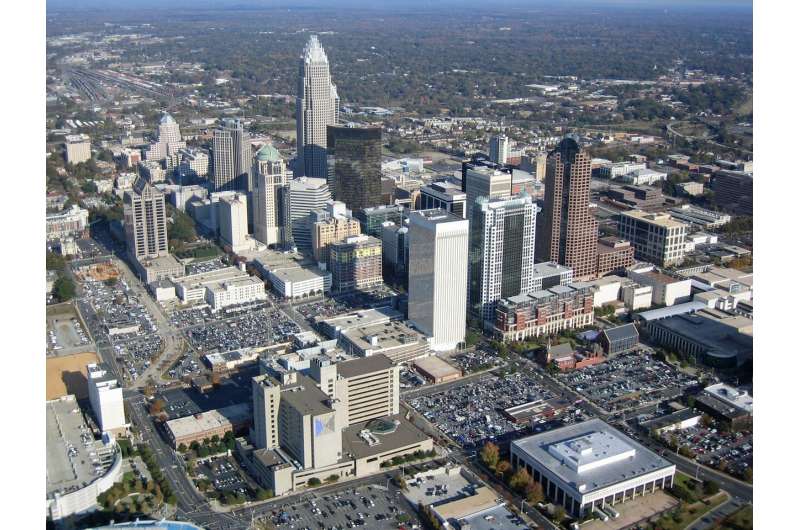This article has been reviewed according to Science X's editorial process and policies. Editors have highlighted the following attributes while ensuring the content's credibility:
fact-checked
peer-reviewed publication
trusted source
proofread
Global South cities lack cooling green spaces

Cities in the Global South are more exposed to extreme heat because they lack cooling green spaces, new research shows. The study found that Global South cities have just 70% of the "cooling capacity" provided by urban greenery in the Global North. The paper, published in the journal Nature Communications, is titled "Green infrastructure provides substantial but unequal urban cooling globally."
With temperatures rising, combined with the "urban heat island" effects that make cities hotter than rural areas, heat-related illness and death in cities are becoming more common. Urban green spaces can help reduce this risk, cooling down outdoor environments and providing vital refuges.
The research—led by an international team including Nanjing, Exeter, Aarhus and North Carolina State universities—finds there is "vast potential" to enhance urban cooling in the Global South and reduce inequality.
"Urban greenery is a really effective way of tackling what can be fatal effects of extreme heat and humidity," said Professor Tim Lenton, of the Global Systems Institute at the University of Exeter.
"Currently, the people dying due to climate change are often in the slums of cities in the Global South, such as the hottest parts of India. Our analysis suggests green spaces can cool the surface temperature in the average city by about 3°C during warm seasons—a vital difference during extreme heat."
The cooling effect of urban green spaces, especially urban forests, is caused by shading and transpirational cooling (evaporation of water).
The new study used satellite data on the world's 500 largest cities to assess "cooling capacity"—the extent to which urban green spaces cool down a city's surface temperatures.
All of the top ten cities for cooling capacity are in the U.S., with Charlotte and Raleigh-Durham first, followed by Kansas and Baltimore. Many US cities have low population density—leading to issues of urban "sprawl"—but this brings benefits in terms of green spaces and resulting cooling.
Mogadishu in Somalia is the city with the lowest cooling capacity, followed by Sana'a in Yemen and Rosario in Argentina. Chicago is fourth-lowest—the only US city on the list with cooling capacity below 1°C.
'Cooling benefit'
The Global South—which includes Africa, Latin America and much of Asia—contains the areas most at risk from extreme heat.
A previous study found that current climate policies will leave more than a fifth of humanity exposed to dangerously hot temperatures by 2100, with the largest at-risk populations in India and Nigeria.
The new study assessed population density and location to estimate the "cooling benefit" received by the average citizen—as green areas are often found in the richer parts of a city.
Professor Chi Xu, of Nanjing University, said, "As well as Global South cities lagging behind in terms of cooling capacity, the cooling benefit for an average resident is 2.2°C—compared to 3.4°C for a city dweller in the Global North. The differences are mostly due to quantity of vegetation, but efficiency of cooling is also better in the Global North—possibly due to management of green spaces and different tree species."
Professor Jens-Christian Svenning, of the Center for Ecological Dynamics in a Novel Biosphere (ECONOVO) at Aarhus University, said, "The good news is that this nature-based solution to cooling can be substantially improved across the Global South, helping to tackle future heat stress for billions of people."
Professor Rob Dunn, of North Carolina State University, said, "It won't be easy to regreen cities. It can be expensive in the short-term. Yet, it will be key to making cities livable in the immediate future. Also, the key will be working to prevent the loss of green space in those cities that have it, or at least that have a little.
"Changes could include ground-level green spaces and vertical and rooftop gardens, or even forests, to help protect city people from extreme heat."
More information: Green infrastructure provides substantial but unequal urban cooling globally, Nature Communications (2024). DOI: 10.1038/s41467-024-51355-0
Journal information: Nature Communications
Provided by University of Exeter





















